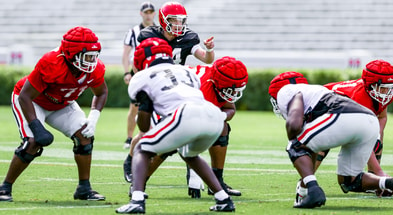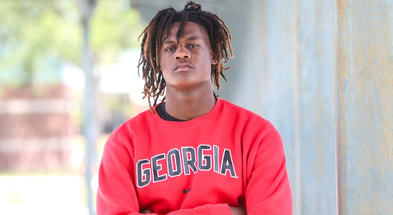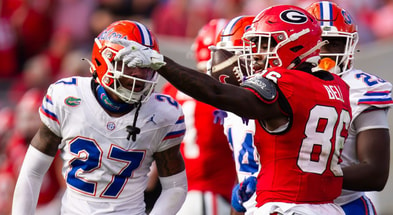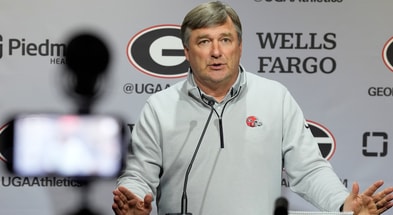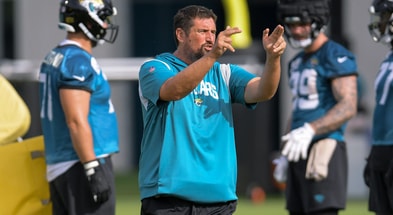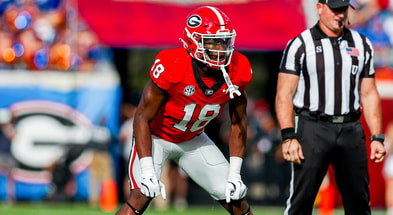Todd Monken compares different skillsets of UGA tight ends Brock Bowers and Arik Gilbert

There’s no secret that Georgia has plenty of weapons at their disposal on the offensive side of the ball. Despite a couple of players who left for the transfer portal and NFL Draft, the Bulldogs’ offense in 2022 should look eerily similar to the same group that found success in 2021.
A specific position group of the Georgia offense that has gained a lot of attention in the offseason is the Bulldogs’ tight end room. While Brock Bowers’ phenomenal freshman season was enough to break multiple Georgia records and new tight end Arik Gilbert presents a vertical threat to Monken’s scheme, the Bulldogs’ real strength at the position lies in their versatility.
Earlier this week, Georgia offensive coordinator Todd Monken was asked about the differences between redshirt sophomore tight end Arik Gilbert and sophomore tight end Brock Bowers.
In order to illustrate the differences, Monken mentioned the positional origins of both players.
“Well Arik, a lot like Brock, is a unique talent. Their skill set – Arik is a little bit different in that Arik has wide receiver background in route-running. He’s good with the ball in his hands after the catch, whereas Brock’s background is more get the ball in his hands, H-Back, full-back, run after the catch. That’s probably the difference.”
Playing for Napa (Cali.) High School, Bowers rushed for 316 yards and three touchdowns on 22 carries, adding 1,098 receiving yards and 14 touchdowns on 39 receptions. His experience as a running back came in hand for him during his freshman year at Georgia, being able to run by defenders on multiple 75+ yard touchdowns.
“As Brock needs to continue to develop his running, he’s one of those guys where you just have to get it in his hands. And he has a better catch radius than I thought. Arik is more of a route-runner. He’s been in that, in terms of what he’s developed, it’s almost like an air-raid lock. So that’s been a part of that,” Monken continued. “Both have unique skillsets. We didn’t know exactly what we had with Brock. We knew he was rare in how he worked, and how he came every day. How that developed and kept going, we just kind of fell into it. We knew he was fast once he could catch and run with it. That’s different. The GPS says one thing on the field, and you think, ‘We have to keep trying that.’
Top 10
- 1Breaking
Nico Iamaleava
Tennessee & QB under contract negotiations
- 2New
Arch Manning
Texas QB explains staying
- 3
Mark Pope
Receives raise, extension
- 4Hot
QB Mock Draft
Predicting landing spots for Top 12
- 5
Pat McAfee
Host talks Mary Kate Cornett lawsuit
Get the On3 Top 10 to your inbox every morning
By clicking "Subscribe to Newsletter", I agree to On3's Privacy Notice, Terms, and use of my personal information described therein.
In Gilbert’s lone collegiate football season in 2020 with the LSU Tigers, the Marietta (Ga.) High School product racked up 368 yards and two touchdowns on 35 receptions. While the average yards-per-reception of 10.5 is meaningful, it does not tell the full story. In order to find a deeper understanding, I tracked every snap that Gilbert took during his 2020 season in order to find out where he was on the field when he caught the football.
As a shock to no one, 51% of Gilbert’s receptions came between one to five yards past the line of scrimmage. Given that LSU’s 2020 offense operated around run-pass options, this statistic was extremely predictable. The number that stands out was that 26% of Gilbert’s receptions came more than ten yards past the line of scrimmage, an extremely high number for a tight end.
Despite the hype around the tight end group this fall, don’t expect to see Georgia run four-tight end personnel too often.
“Well, if you run it too often, you get every wideout in the portal (laughing),” Monken explained. “We do have great players at that position. You do have to utilize their skill set, but you also have to balance that because there is a cost to that. It is one thing to say we are going to utilize three-team personnel, four-team personnel, then it is like ‘ok, what are we going to do out of it to execute?’ That is probably the toughest thing is how do you get through practice and execute how you want it to look once you get to the game. That happens a lot in offense and defense meetings, where a defensive coach will say ‘boy, that really gives us problems.’ It only gives you problems if we can execute. If it gives us problems as well, it is really not worth anything. We do have good players there. We do have to find a good way to get them on the field and use all of our talented players.”

